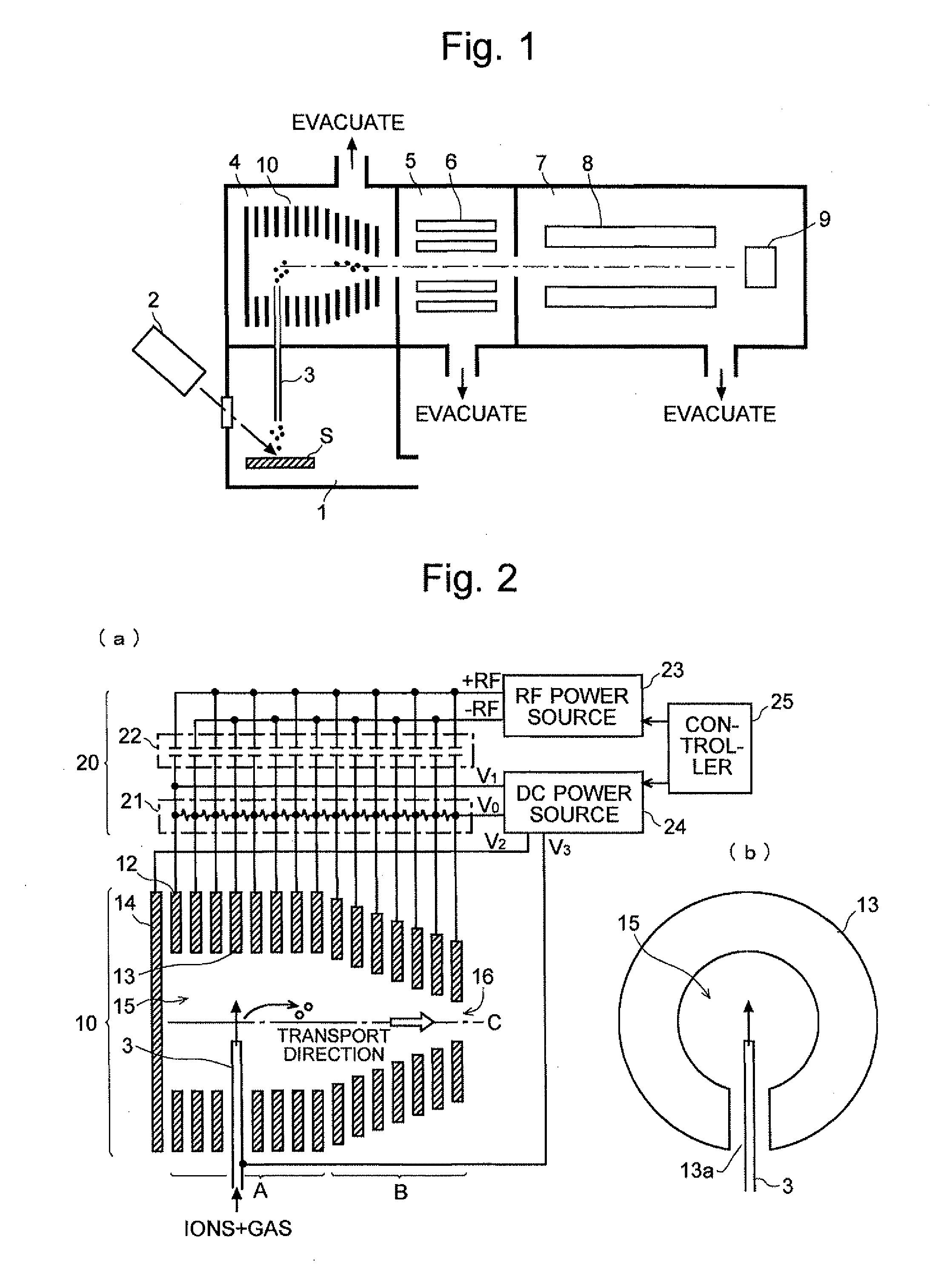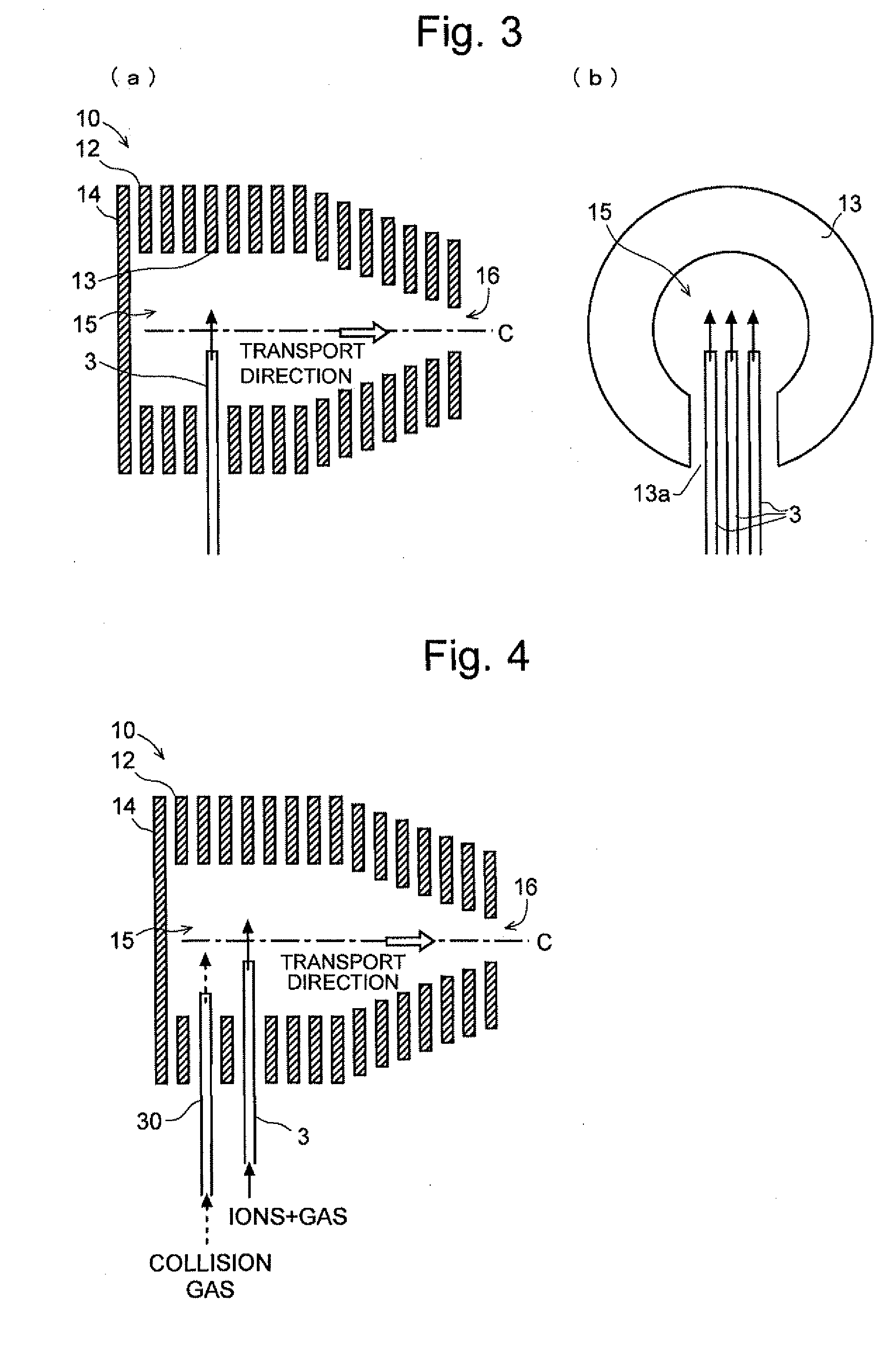Mass Spectrometer
a mass spectrometer and atmospheric pressure technology, applied in the direction of particle separator tube details, dispersed particle separation, separation process, etc., can solve the problems of inability to easily improve the overall ion-transport efficiency, considerable ion loss, and ions loss, so as to improve the ion-transport efficiency, efficiently transport, and collect
- Summary
- Abstract
- Description
- Claims
- Application Information
AI Technical Summary
Benefits of technology
Problems solved by technology
Method used
Image
Examples
first embodiment
[0038]One embodiment (first embodiment) of the mass spectrometer according to the present invention is hereinafter described with reference to the attached drawings.
[0039]FIG. 1 is a schematic configuration diagram of an AP-MALDI mass spectrometer according to the first embodiment, and FIG. 2 is a configuration diagram of the ion-transport optical system in this mass spectrometer.
[0040]The present mass spectrometer has the configuration of a multi-stage differential pumping system including an ionization chamber 1 at approximately atmospheric pressure, a high vacuum chamber 7 evacuated with a high-performance vacuum pump (turbo molecular pump, which is not shown), and two intermediate vacuum chambers 4 and 5 provided between the aforementioned chambers 1 and 7. In the ionization chamber 1, a sample S containing a sample component to be analyzed is irradiated with a laser beam from a laser source 2, whereby the sample component is ionized. The first intermediate vacuum chamber 4 cont...
second embodiment
[0058]Another embodiment (second embodiment) of the mass spectrometer according to the present invention is hereinafter described with reference to the attached drawings.
[0059]FIG. 7 is a schematic configuration diagram of an ICP mass spectrometer according to the second embodiment, and FIG. 8 is a configuration diagram of the ion-transport system in the present mass spectrometer. The same components as used in the mass spectrometer and the ion-transport optical system of the first embodiment are denoted by the same numerals, and detailed descriptions of such components will be omitted.
[0060]In the present mass spectrometer, a sampling cone 41 is provided between the ionization chamber 1 and the first intermediate vacuum chamber 4. A micro-sized orifice 42 is bored at the top of the sampling cone 41, through which ions can be injected into the ring-electrode inner space of the electrode unit 10. For this purpose, a number of ring electrodes 17 located in the nearer half of the elect...
PUM
 Login to View More
Login to View More Abstract
Description
Claims
Application Information
 Login to View More
Login to View More - R&D
- Intellectual Property
- Life Sciences
- Materials
- Tech Scout
- Unparalleled Data Quality
- Higher Quality Content
- 60% Fewer Hallucinations
Browse by: Latest US Patents, China's latest patents, Technical Efficacy Thesaurus, Application Domain, Technology Topic, Popular Technical Reports.
© 2025 PatSnap. All rights reserved.Legal|Privacy policy|Modern Slavery Act Transparency Statement|Sitemap|About US| Contact US: help@patsnap.com



